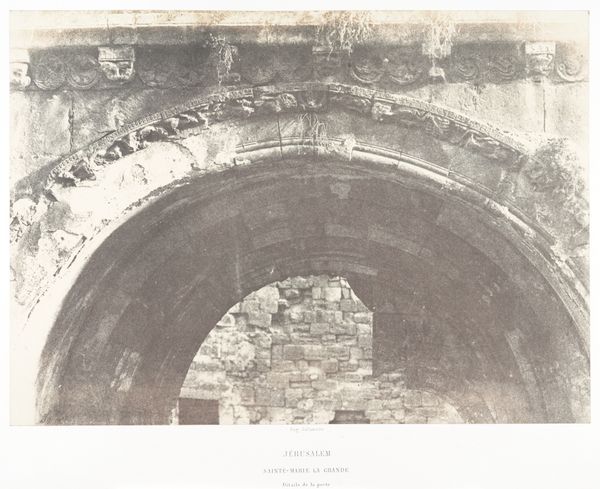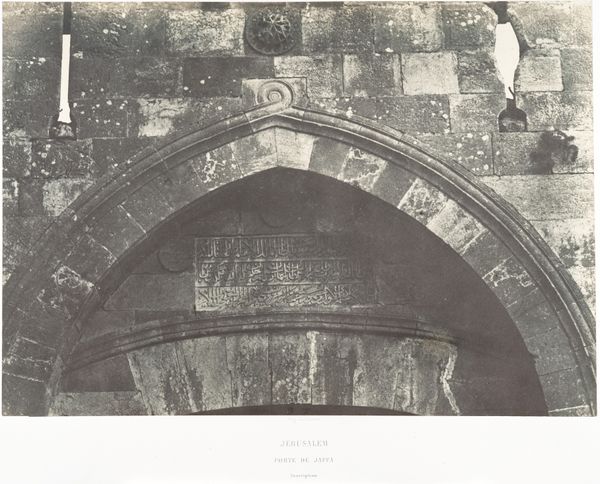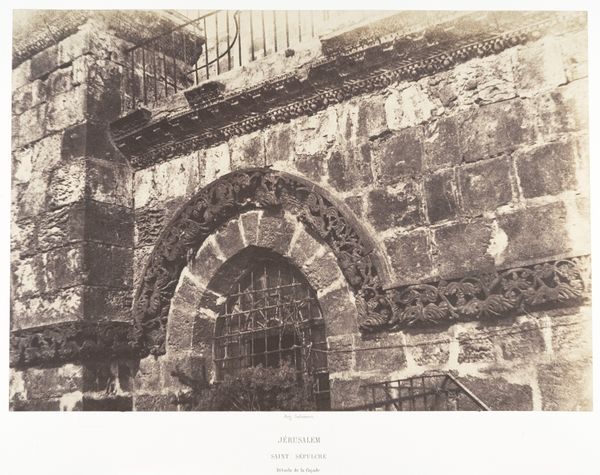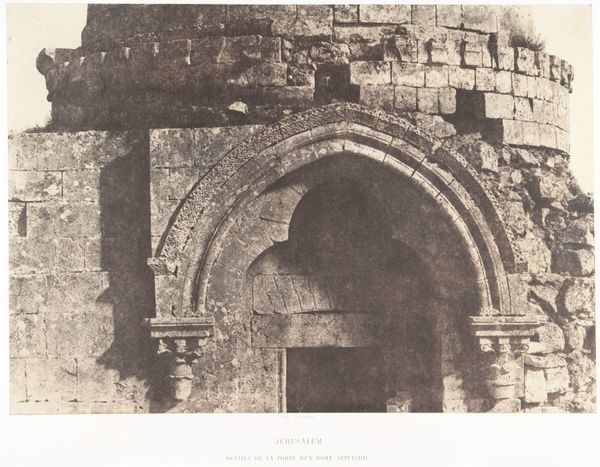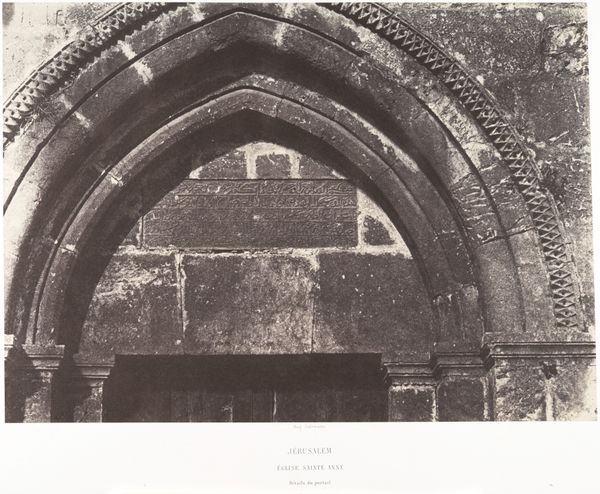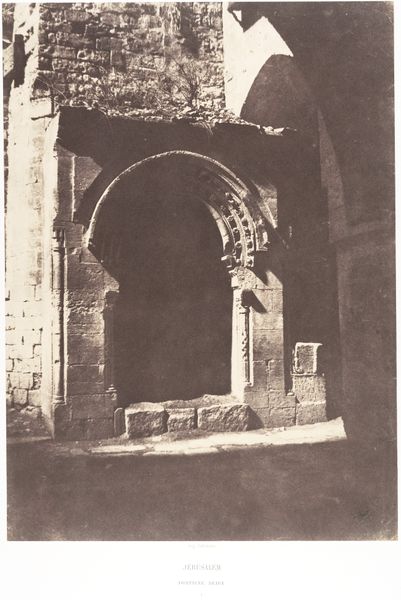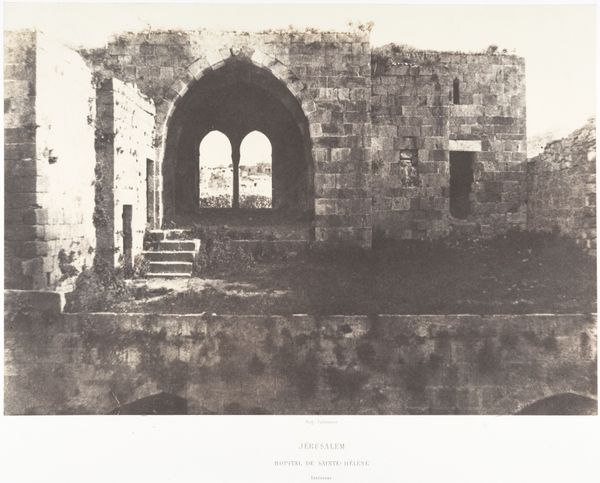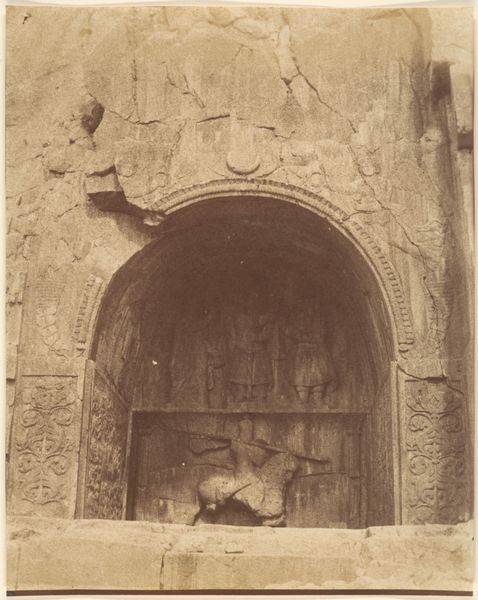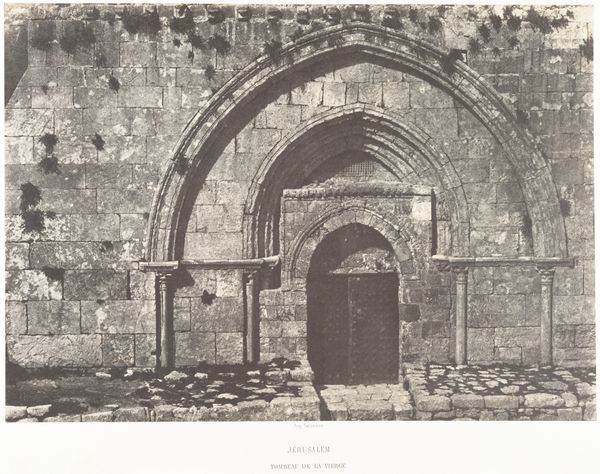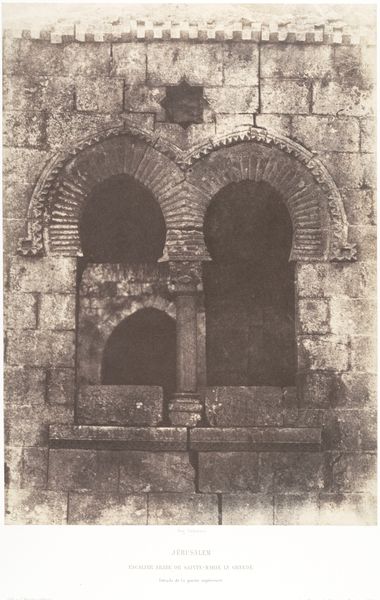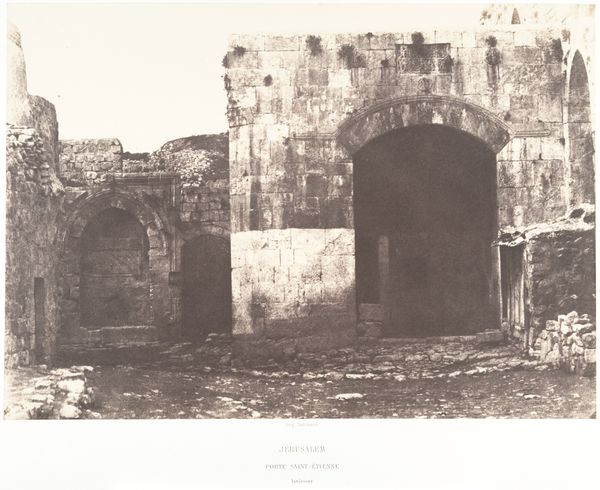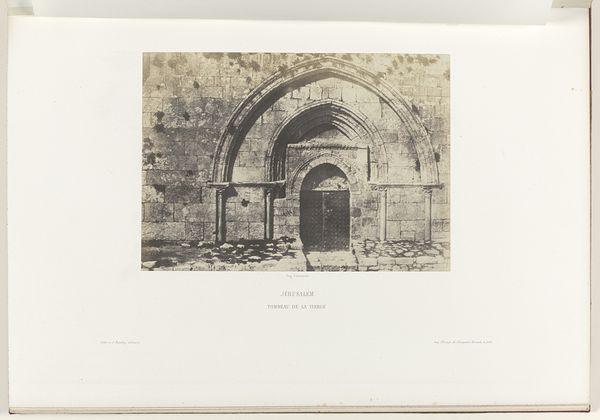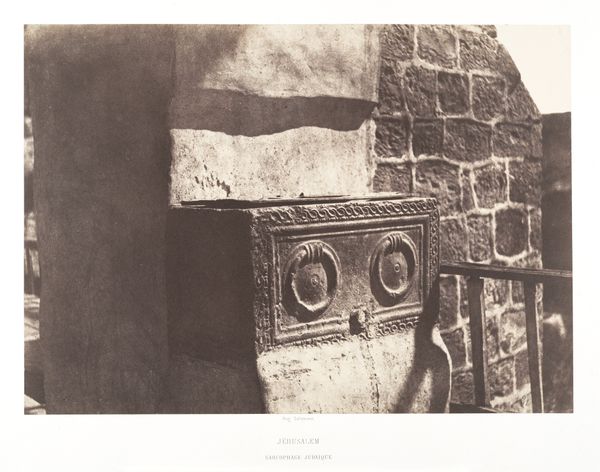
Jérusalem, Porte de la citadelle, Inscription 1854 - 1859
0:00
0:00
architecture
#
photo of handprinted image
#
natural shape and form
#
rough brush stroke
#
organic shape
#
incomplete sketchy
#
grainy texture
#
carved into stone
#
fading type
#
arch
#
pale shade
#
architecture
#
shadow overcast
Dimensions: Image: 22.5 x 33 cm (8 7/8 x 13 in.) Mount: 45 x 60.4 cm (17 11/16 x 23 3/4 in.)
Copyright: Public Domain
Editor: This is Auguste Salzmann's photograph, "Jérusalem, Porte de la citadelle, Inscription," created between 1854 and 1859. It has a wonderfully aged, almost ghostly quality, focusing on the archway of a stone gate. What do you see in this piece? Curator: I see layers of history etched, quite literally, into stone. The photograph itself becomes a relic, capturing a relic. Consider the arch as a symbol: a gateway, a passage. But to what? What emotional resonance do you find in that framing of light and shadow, revealing barely perceptible text? Editor: It feels weighty, burdened with the past. Is the inscription significant? Curator: Indeed. Inscriptions are deliberate acts of memorializing. Someone chose those words, those symbols, to impart a message, to secure a legacy. Look closely at the details. Does the style of the script, its placement, suggest anything about the culture or the purpose behind its creation? Is there a potential tension between permanence (the stone) and impermanence (the fading inscription, the photograph itself)? Editor: So it's more than just an architectural record; it's about the layers of meaning and the passage of time affecting both the structure and the message. Curator: Precisely. The image asks us to contemplate how we, too, build our own gateways and inscribe our own stories onto the world, knowing that time will inevitably alter our creations and our intentions. How does contemplating this ephemerality make you feel? Editor: I think it highlights the power and fragility of cultural memory at the same time. I hadn’t considered the photographer's role in creating yet another layer of inscription. Thanks for helping me consider the cultural weight within! Curator: And thank you for noticing that dialogue across centuries, and for reminding me of the continuous reverberations of history!
Comments
No comments
Be the first to comment and join the conversation on the ultimate creative platform.
